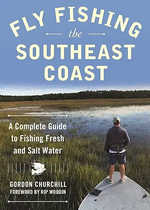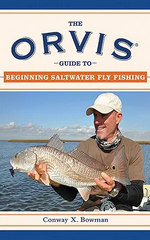*#$@!&#%, I broke my rod! Now what?
The most important thing you can do when you break your fly fishing rod is something you do when you first bring it home from the fly shop or get it in the mail. You do it before you have put your rod together, put a reel on it or even tried to cast it.
This “it” only takes a minute and if you don’t do it when I say, you won’t do it until it’s too late. The rod is broken and you want it fixed (or replaced).
But this gets more complicated if you have not done “it.” “It,’ of course, is filling out the registration card and sending it in to the manufacturer.
Why does that matter? Manufacturers are not dummies. They know some people will pull an old fly rod out of the trash or buy it for mere pennies from a disgruntled and chagrined owner and send the busted rod in to have it fixed for almost free in keeping with the Lifetime Warranty.
Manufacturers will point out that the Lifetime warrantied is not the lifetime of the rod but the lifetime of the original owner, not the rod’s lifetime. Sending in the registration as soon as you get the rod will establish your ownership of the rod from the time of purchase.
But, just for the sake of argument, of course, let’s say you didn’t do this and now your rod is broken. At the very least, search through all your receipts for the past two decades and find the date and location of the purchase. Then contact the rod company. Explain the situation honestly. Perhaps they will believe you.
If you happen upon a drawer with a whole batch of the registration cards, fill them out and send them in with a letter or explanation. I had to do that recently. Also, I was putting an 11-wt. rod which I seldom use in its case for a teaching event. The rod in a rod sock didn’t slide into the metal case (it is a Scott rod) very readily. I pulled the portion of the rod sock out that wouldn’t go in. Out with it came the registration form. It had been in the rod case since Ann bought the rod for me for our 42nd anniversary (we’re coming up on our 49th in October). It had been setting there since she bought the rod for me. Again, I wrote a cover letter and noted that I owned two other Scott rods and can’t remember if I returned the registration. Fortunately, I haven’t had any trouble with any of them, in part because of what Ed Smith said in terms of not taking your expensive rods in places where they could get broken.
The manufacturer may give you a code to put on the box used to return the rod to them. Yes, they usually like to have the whole rod. Two reasons for sending the whole rod: 1. This way they can make sure everything fits and works; 2. With the whole rod, they have a better chance of figuring out what really happened to your rod so they will know how much to charge you.
One of my guides told me the last time we were together that he had sent a broken rod back to the manufacturer and the manufacturer called him to tell them the story of the break. They had never seen a break quite like the one involving his rod and they wanted to be able to add it to their collection of rod breaks & their causes.
So, don’t try to tell them a 45 lb. Brook Trout broke your rod when your wife sat on it by mistake or you left it on top of your car and drove away. I wish I could remember what my guide’s story was but the folks at TFO now know what to look for.
Back to your broken rod, call the company, send it off (with a check for the projected amount, your account of what happened to it and your mailing/shipping address plus phone number). Sometimes you may get a whole new rod of equal or higher quality. Many times, they will replace the section of the rod that broke. I am told that if you built your rod from a blank, they will get you a new section of blank but they will not give you a new section of a built rod- just the blank.
If the company returns you rod to you in a triangular shaped box, keep the box for future use. It works exceptionally well for shipping rods.
But wait, there’s more.
Early in my second fly fishing career (the first was when Harvey, Charles and I would go out to Fort Loudon Lake [one of the TVA lakes in Knoxville] in a 14’ Wagemaker molded plywood boat [the only boat our family ever traded and the new owner let it sit in his yard, collect water from rain and snow, and rot- Charlie drove by it on the way to school each day and saw it all- what a shame]). Anyway, Dad (Pappy as some of us called him) had a set of oars. He would man the oars and the angler of the moment would sit on the back seat while the two other brothers would sit up front. The rule was 30 minutes or 1 bluegill (or other fish) and then you would change seats. Those cheap bamboo or fiberglass rods were so slow but so much fun to cast.
OK, back from memory lane, early in my second fly fishing career I had three fly rods (not counting my cheap bamboo rod from childhood). I had a 9’ 8-wt. Orvis Clearwater (cast it this afternoon in 18 mph winds and it still works well), a 9’ 7-wt. TFO Signature Series I bought on sale on my first trip to Cape Lookout for Fat Alberts, and a 9’ 5-wt. Cabelas I had made from a blank- the first fly rod I ever made. I had made 30 or so baitcasting and spinning rods but never a two-piece rod and never a fly rod. I bought the cheapest blank Cabelas offered so I wouldn’t screw up an expensive fly rod.
Well, one day I had all three of them in my hands to go out and practice. It was a hot day and the ceiling fans underneath our house in the car bays were on. You can guess the rest- maybe. All three rod tips got up into the moving fan blades. The Orvis Clearwater got clipped, the TFO lost about 3” of its tip, and the Cabelas emerged in one piece (it does cast like a pool cue). I sent the Orvis off to Orvis and got a replacement. The Cabelas didn’t need any help. I didn’t know that the TFO had a warranty so rather than send it off, I replaced the tip top. Instead of a 9’ rod it is now an 8’ 9” rod (likely more a 7 ½ -wt than a 7. It’s still a favorite). Since then, I always carry about 20-25 tip tops of various sizes in my fly fishing bag along with a stick of tip-top glue and a cigarette lighter to melt the glue. You would be amazed how many times my bag of tip tops has saved the day for someone who broke a tip off. It only takes a few minutes to fix. Well, you say, why not just take the old tip top off and use it? Good question. But each blank is tapered so if you take 3” off the top, the new tip top needs to have a wider opening than the old one- the old one will not fit. But don’t throw it away. Simply heat the tip top and pull out the broken piece of blank so you can use the tip top to fix a 5- or 6-wt. down the line.
So, the bottom line is that *#$@!&#% means the end of the line. But it doesn’t mean that necessarily, especially if you send your registration card in. We have people in our Club who have had the samde rods repaired three and four times over the years. Stuff happens but, if you read the piece about the high cost of fly rods, the manufacturers are prepared for it. It’s not the end of the world- just a temporary set back.
Don’t forget to check out the resources of Fly Fishers International at www.flyfishersinternational.org.
Also, Google this and other topics of interest and go to YouTube for seemingly endless videos.



